Welcome to the second act of our exploration into the exhibition Evasiones. The Street as Fiction, where the concept of evasion takes center stage. Think of it as a delightful dance around societal norms, expectations, and the concrete confines of urban life. Here, the streets become more than just pathways; they transform into vibrant canvases—playgrounds for experimentation, rebellion, transformation, and reconfiguration.
In part one of the series, we chatted with curator Jaume Gómez Muñoz about the themes that weave through the exhibition. Now, in this second article, we invite you to dive into the minds of the talented artists who bring Evasiones to life at B-Murals.
We’ll try to uncover how these leading contemporary urban artists engage with their surroundings, balance between artistic freedom and societal expectations, and reshape public spaces with thought-provoking work. Join us as we journey through their unique interpretations of evasion, where the city serves as both muse and canvas.
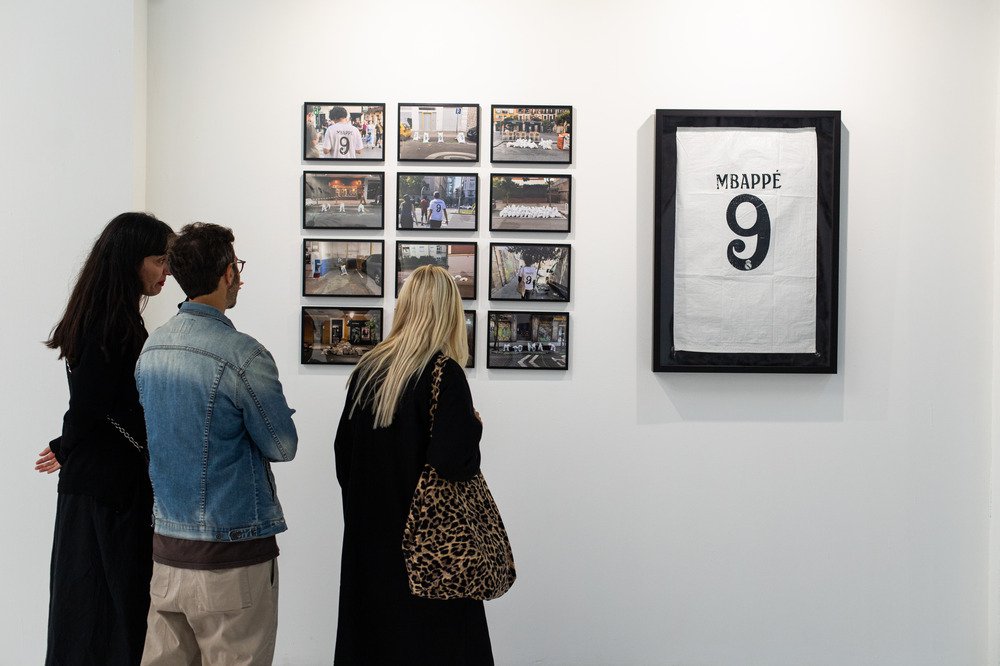
…The Artists…
Your work in this exhibition plays with the tension between artistic expression and societal norms. How do you approach this balance in your creative process?
Yoni @yonifatcap. I don’t understand social norms.
Mathieu Tremblin for Les Frères Ripoulain. The use of graffiti in films and fictional series illustrates the historical role of public inscription as a means of sharing common experiences. This utilization transcends the polarized contemporary interpretation that reduces graffiti to a mere act of vandalism, which emerged in the early 20th century with its criminalization as analyzed by French historian Philippe Artières.
Jean-Philippe Illanes. To be honest, compared to contemporary art, I don’t really see a tension. It’s just a different language and different codes.
Vandals on holidays. Before designing an intervention, it is important to evaluate the behavior in question and its determinants to establish whether the norms are at play or not. We often overlook these norms (which are unwritten and not universal) and justify our actions under the idea that, no matter how harmful it may be to the short-term well-being of certain individuals, it is beneficial in the long run… Perhaps like the pruning of a tree.
Sonja Ben. It’s interesting to explore how cultural conventions, expectations, and unspoken rules can limit but also challenge and inspire our creativity. This balance is built from tension, not as a struggle but as a dialogue. I often work within certain intentional restrictions but also look for ways to subvert those same rules, sometimes subtly and other times more directly.

Alén do Cascallo (Beyond the Rubble). The structures we choose are unfinished buildings, their presence as urban ghosts generates their own social tension. Although their construction may not be illegal in some cases, people reject them with a sense of powerlessness. Alén do Cascallo seeks to shed light on these dark, damp buildings using motifs based on the prehistoric heritage of the region. From our perspective, our interventions relieve the social tension surrounding these useless constructions.
In what ways does your piece for this exhibition challenge or expand on the common narratives around graffiti and urban art?
Sonja Ben. Graffiti is often framed within narratives of marginality or illegality, but I think it’s much more than an act of resistance. It’s a cultural voice, a medium of communication, and an art form that sits at the intersection of the public and the personal. In this piece, I try to expand on that perception by highlighting the multidimensional nature of graffiti.
Mathieu Tremblin for Les Frères Ripoulain. The global popularity of American graffiti tends to reduce all types of public inscriptions to a simplistic and juvenile urban game. The Graffiti Fiction series reintroduces a complexity that existed in Europe (and beyond) prior to the 1960s, which allowed for the transformation of space into a public forum.
Yoni @yonifatcap. I’m a good person and I’m not challenging anyone; graffiti and urban art are supposed to be really cool, they must know what they’re doing.
Vandals on holidays. It is a ‘graffiti-based’ jam. These figs have grown with the ebb and flow of the goods until they were harvested. They have witnessed dozens of writers painting their pieces throughout the season. While the writer intervenes on the train car and claims it as their own, this jam aims to intervene on the same theme but with a broader perspective. It is a work that can only develop under those precise circumstances, in that specific environment, and with those premises. (Improper) appropriation and the creation of a piece that is not only visual, like graffiti itself, but can also be touched and tasted. Without spray paint and without appropriation, this jam would be meaningless.

The theme of the exhibition centers around the idea of evasion. How do you personally interpret this concept in relation to your work?
Sonja Ben. Graffiti and urban art, in themselves, represent a form of evasion. In this sense, ‘evasion’ is not just an escape, but a reconfiguration of space and discourse, a way of rewriting what surrounds us.
Alén do Cascallo. We begin with the study and investigation of prehistoric images that have no explanation. By making rubbings and reproductions of the same motifs, we immerse ourselves in their mysterious forms and try to understand a context where these rock carvings are the only testimony.
Yoni @yonifatcap. I could only think of the movie Chicken Run, and it wouldn’t let me think of anything else, so I did whatever I wanted.
Vandals on holidays. On one hand, it refers to evading and skipping the rules to achieve the ultimate goal, the piece. On the other hand, it refers to that state of concentration during the development of the work. Once in action, immersed in creation, where the mundane and the temporal do not exist.
Jean-Philippe Illanes. The idea of escaping by painting my own receipts is a challenge in itself. The practice of painting, the confrontation with texture, the observation of different typographies, and recalling the moments associated with each receipt provided me with moments of evasion while I painted them.
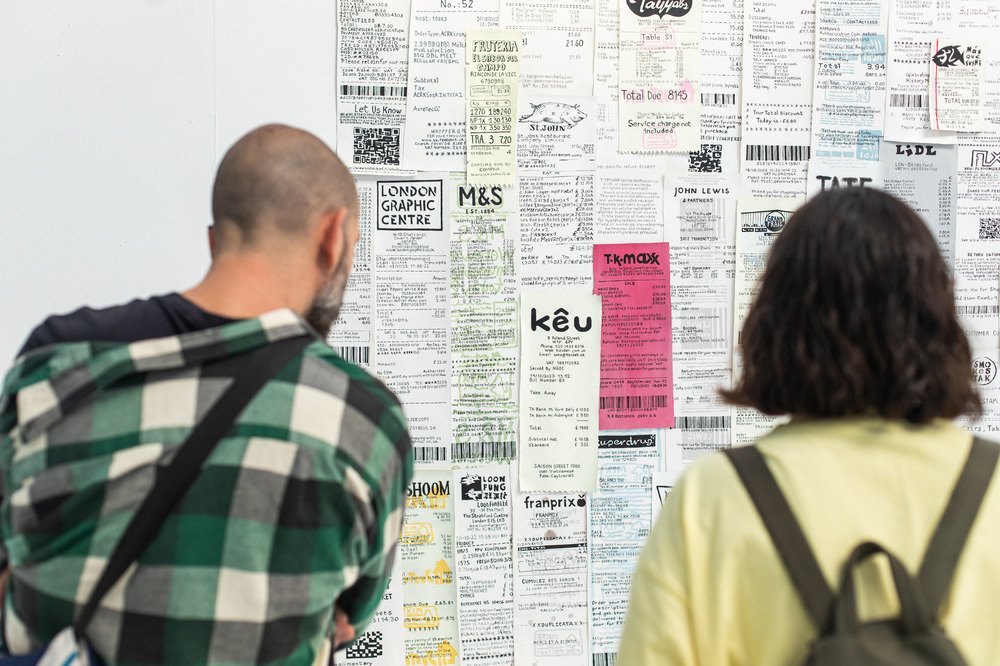
Mathieu Tremblin for Les Frères Ripoulain. Engaging in visual archaeology by extracting graffiti that appear in films and television series brings a new, unilaterally cinephilic interest to the act of viewing. The quality of the production becomes secondary, as any narrative, even that of a cheesy romantic comedy, can be of interest with regard to the role of graffiti in fiction.
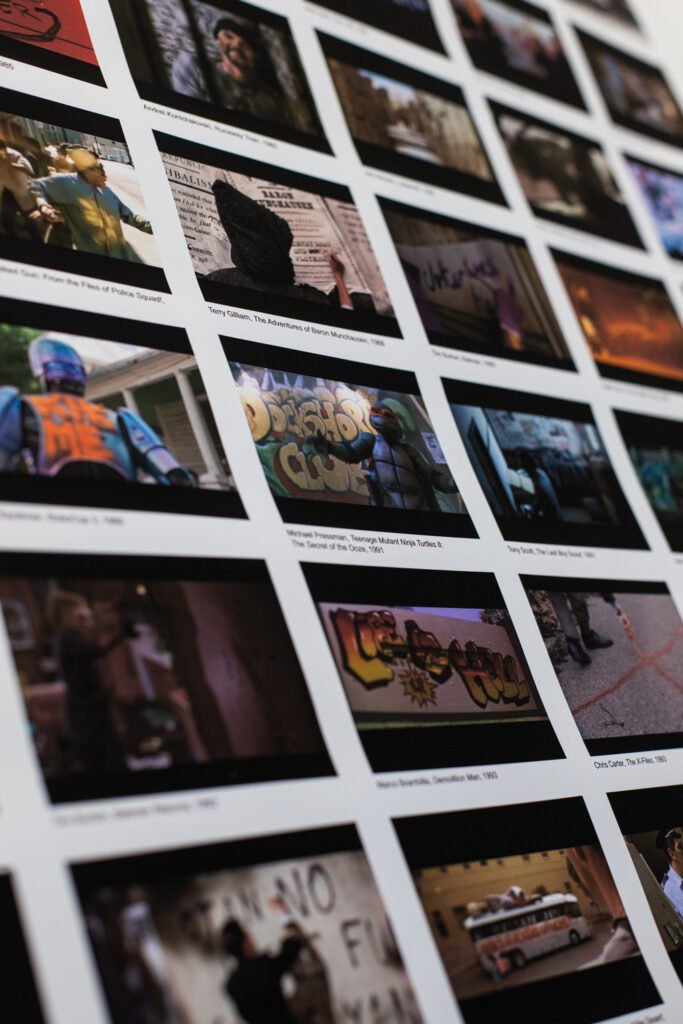
How does the urban environment influence your work? Do specific places or contexts in the city inspire the pieces you create?
Sonja Ben. The urban environment is a fundamental influence on my work, as it is both the canvas and the context that shapes the pieces. The city is not just a physical space, but also an environment loaded with stories, tensions, and social dynamics in constant transformation. Abandoned industrial areas and places of transit have a strong magnetism for me.
Yoni @yonifatcap. It influences the parachuting artist in a diametrically opposed way.
Vandals on holidays. In order to be influenced by the environment, one must know how to pay attention to it. The training one has and their concerns will allow them to find more or less richness in the medium. This attraction can be physical, defined by architecture, infrastructure, light, shadows… and, on the other hand, it can be emotional and social, with its history, its discovery, the adventure, the exclusivity of the first explorer, the residual, the ignored… Graffiti itself (under our definition of graffiti), in its most superficial reading, feels a great magnetism for railway tracks and adjacent constructions. It influences the forms, materials, colors, sophistication, time, and mode, among other things.

Mathieu Tremblin for Les Frères Ripoulain. Since the early 2000s, our work has been based on the observation and interpretation of traces, uses, and attitudes of anonymous citizens in urban spaces. With the omnipresence of the Internet, digital practices and behaviors related to social media have begun to permeate everyday life. Cultural references that were once confined to a close circle of friends have become the new foundations for opportunistic communities. The Guy Fawkes mask from V for Vendetta (an icon of the Anonymous hacker group) became a symbol of digital counterculture during the occupations organized in New York at the turn of the 2010s.
From 2019 onwards, the surface of the fluorescent vests worn by the Yellow Vests in France accommodated conversations that had initially raised awareness on Facebook, allowing people to connect in public spaces and join and defend a cause on the ground rather than remaining in front of screens. Online practices today are developing a continuum between private and public spaces. Online and real-life practices are forming a new urban culture that links affects to politics—which is the routine of artists and the challenge of any creative practice within the city.
Some of your work addresses the commercialization of urban art. How do you navigate this tension while maintaining authenticity in your art?
Vandals on holidays. Graffiti and urban art are a phenomenon much deeper than it may seem at first glance. Robbing a bank is art. Art as skill, art as manifestation, art as the ability to interpret and capture the imagined. It is extremely broad. The foundations that give rise to graffiti (considering it as vandalism that gives way to art) mean that its sale and speculation undermine all the pillars on which it is based; it destroys the spontaneous, the illegal, the outside of society, the outside of the market, and the unyielding search for authenticity and fidelity, the pursuit of that pure evasion.
Thus, in this case, these are works based on graffiti, but at no point do they put it up for sale. In other words, they are inspired by and are an image of it, but this original art is neither manipulated nor affected.
Yoni @yonifatcap. Any little stall at the flea market has more impact on the commercialization of urban art than I do.
Jean-Philippe Illanes. I’ve always commercialized my studio work, but I’ve never thought about selling what I create on the street. It’s part of my background and a source of inspiration, like a painter who makes still life pieces—he doesn’t sell the objects, just the paintings he creates of them.
Alén do Cascallo (Beyond the Rubble). So far, we haven’t made a single cent from this project; in fact, we’ve lost money—which is what keeps our authenticity intact 😉
Mathieu Tremblin for Les Frères Ripoulain. We have consistently employed a site-specific approach in our work, ensuring that if financial resources were involved in the production process, the value of the artwork would be intrinsically linked to the expenditure of our labor power. Furthermore, we have eschewed the
creation of artificially scarce or limited works, opting instead to disseminate our ideas through open-source or copyleft processes and publications.

Can you tell us more about the materials and techniques you used in the piece you contributed? How do these choices reflect the themes of the exhibition?
Alén do Cascallo. For the paintings, we used eucalyptus bark as the base, a byproduct of the monoculture that invades more than 30% of the Galician forest area. The paint was made in a primitive way, using crushed brick as pigment mixed with cherry sap, and applied with a brush made from the hair of a wild boar that had been killed by hunters.
Jean-Philippe Illanes. For this exhibition, I enlarged store receipts and painted them on gesso-coated canvases with enamel, giving them a relic-like quality. The challenge was to elevate these everyday, unnoticed items into something important in my personal narrative—a kind of historical parchment.
Yoni @yonifatcap. Mixed media, I’m the one with the mat.
Mathieu Tremblin for Les Frères Ripoulain. We do not possess the rights to the film’s photograms; therefore, the posters are intended for free download and printing as part of the documentary collection of the Amicale du Hibou-Spectateur (Owl-Spectator Society), which has been studying the vernacular dimension of graffiti since 2021. The black and white analysis sheets resemble archaeological surveys. They are reproductions of graffiti extracted from the film’s space.
It is as if these subliminal messages, present in the background of the film’s plot, escape the frame of the fiction, akin to Jack Slater (impersonated by Arnold Schwarzenegger) traversing the cinema screen to enter the actual theater in Last Action Hero movie from 1993.

Vandals on holidays
Figs 500 g
Water 150 ml
Juice of 1/2 lemon
Sugar 200 g
From the late 19th century to the late 20th century, American migrants in search of work traveled for free, albeit illegally, aboard freight train cars. These so-called “Hobos” began to develop an encrypted language, a series of signs to communicate with each other. They marked with chalk to alert other travelers to important local information. Over time, they started to write in prominent places on the car, their nicknames along with the date and destination they were heading to, what we know as “Monikers,” so that other Hobos could see and recognize them.
With the development of contemporary graffiti, writing on passenger cars and freight cars has allowed writers to reconnect with this culture. They write their names on panels and hop on them to travel across the continent with or without a fixed destination. It’s a quest for adventure, for free transportation, for exclusivity, and the brutal experience of being on top of a heavy, monolithic box of rusty metal moving at breakneck speed, with no safety measures, through valleys, crossing plains, and navigating cliffs. Similar to hitchhiking, undertaking this journey, which can take days, requires being well-prepared for the road, with supplies and tools to leverage, as time disappears and is replaced by uncertainty, contemplation, and the journey itself.
In graffiti, the writer captures their tag, the place, and the time in a photograph. They leave behind the spot where they transformed their intangible idea into a physical object, into a negative. The same has occurred here: a preservation of experience with ripe fruits found in the vicinity of the studied car. We have captured the development of this everyday activity, macerated the aromas, and preserved the fruits in a vacuum-sealed jar; the jar acts as a trigger for that memory.
Urban art often engages with the public in a direct and sometimes confrontational way. How do you see the relationship between your art and the people who encounter it?
Sonja Ben. I understand that urban art, by its public nature, can be confrontational. It’s this accessibility that fascinates me: anyone, regardless of their background or prior knowledge of art, can interact with the piece and take something away from it. I see the relationship between my art and the people who view it as a direct and immediate dialogue.
Alén do Cascallo. Our interventions are large, on striking buildings, with contrasting colors. It’s very hard not to be confronted by them. Seeing the public’s reactions is interesting because almost everyone recognizes the motifs of the petroglyphs, but at the same time, no one knows their exact meaning. It’s a play between the familiar and the mysterious, amplified by the fact that they are on a facade.
Vandals on holidays. Art based on an activity that challenges social and legal norms is delicate. It must be approached with care and may or may not be understood (if there is anything to understand). This makes it a very insular art form; it requires knowledge and prior preparation to understand and appreciate the subject.
Yoni @yonifatcap. My work is neither direct nor confrontational, neither macho nor feminist, neither left nor right; it’s normal… But good people get offended.
Mathieu Tremblin for Les Frères Ripoulain. Art in urban space is a matter of attentiveness to our environment and enhancement of our daily living space. Consumer society tends to impose consensus; one of the objectives of independent art forms is to reintroduce dissensus, thereby generating questions and debates to activate the ‘public’ dimension of ‘public space’.
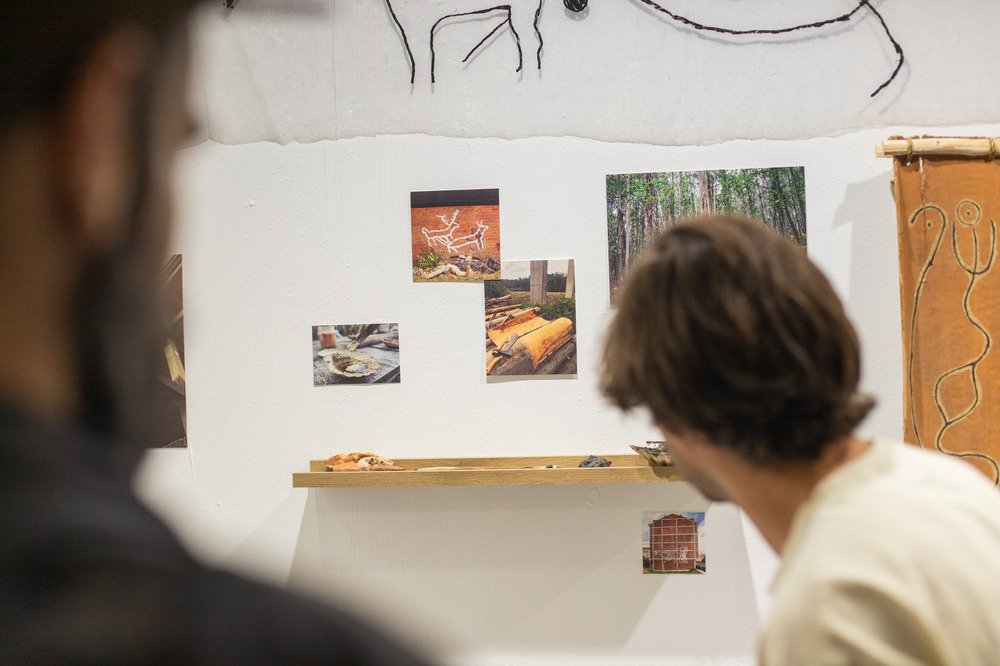
Your pieces engage with new technologies and materials. How do you see these innovations transforming the future of urban art?
Alén do Cascallo. Our piece connects with old technologies. The future will be primitive or it won’t be.
Mathieu Tremblin for Les Frères Ripoulain. When discussing art in urban spaces—rather than street art still lifes in galleries—the role of technology should be to support the development of anticapitalist art forms, given that entropy is the primary process governing the emergence and disappearance of any streetwork.
Yoni @yonifatcap. The technology of my piece is from the early 20th century, but if the telephone has evolved, urban art surely can as well; I believe in it! Long live urban art! Sorry… I mean graffiti!!! 😁
Vandals on holidays. There is a union between the traditional and the technological only in the exhibition process of this work. It is a naturally made jam: fruit and sweetener brought to a boil over fire, a process that dates back to Roman times. This is explained through a video on a screen. That is to say, technology and its advancements help to explain a piece of a handcrafted nature… And this combination becomes an art form that has developed in the urban environment.
The more tools there are, the more possibilities and new horizons.
In your opinion, how important is it to keep urban art tied to its subcultural roots, versus allowing it to evolve within more formal art spaces like galleries?
Sonja Ben. Keeping urban art connected to its subcultural roots is essential to preserve its authenticity and transformative power. That said, the evolution of urban art doesn’t have to be incompatible with its entry into galleries or formal spaces. I believe that if its nature, origin, and context are respected, urban art can grow and expand into new formats and audiences without losing its essence.
Vandals on holidays. It is essential to know where things come from; then, the path of creativity can take you anywhere, to any habitat… where it may detach from its roots and acquire its own name. The caterpillar that became a butterfly.
Yoni @yonifatcap. Urban art is a cutting; in a gallery, it can take root naturally or by adding rooting hormones, but in the street, it only survives naturally.
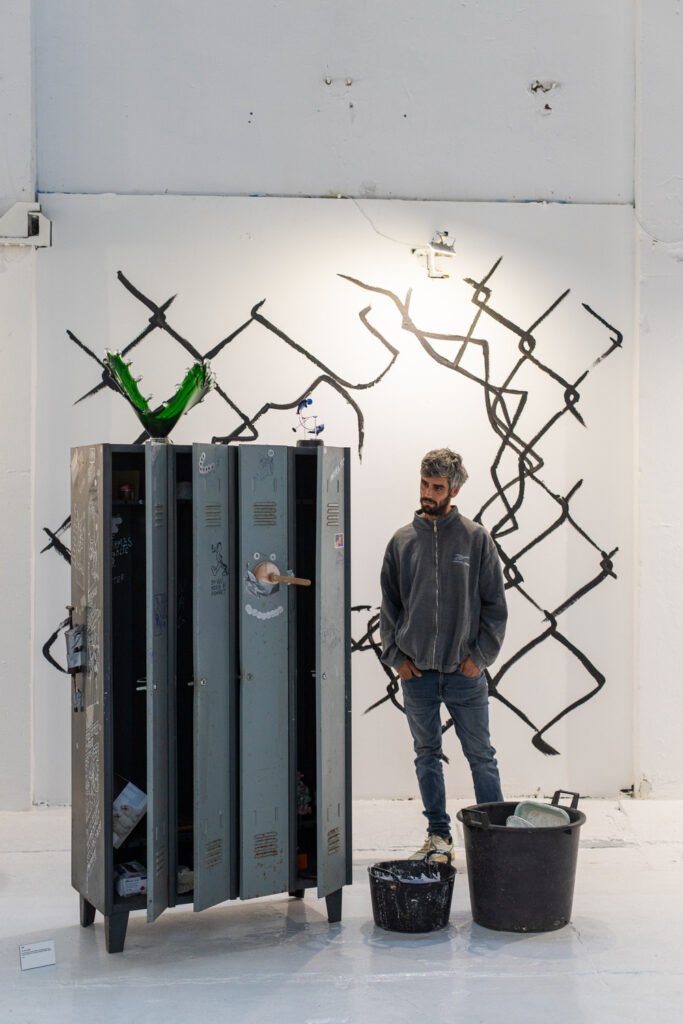
Mathieu Tremblin for Les Frères Ripoulain. The relationship between art, urban space, and museums has been a subject of debate since the early 20th century. Initially, artists attempted to break free from the confines of museum spaces. Subsequently, documentation of their urban interventions returned in the form of exhibited artifacts intended for sale. The late 1990s and early 2000s witnessed a new paradigm shift rooted in the subcultural origins of graffiti. A global community of writers utilized the internet to preserve documentation of art forms existing in urban spaces, operating outside the art market and traditional artistic venues.
This approach provided immediate access to these works for everyone, mirroring the accessibility of streetworks in situ. The problem has been solved. Art in the city can inform the understanding of art forms presented in dedicated art spaces. However, it is important to note that experiencing art in a gallery will never be equivalent to encountering it in an urban environment. Indoor space is associated with control and value, while outdoor space is characterized by anonymity and entropy
What role does storytelling play in your work? How do you use your art to create narratives that resonate with the public?
Alén do Cascallo. The narrative we propose mixes the imagery of Galician rock carvings with the current landscape realities. We play with these two visions to project a future beyond the rubble.
Yoni @yonifatcap. Telling a story or sending a message is the main thing for me. I draw simple characters, some for all audiences and others that carry their own codes. I just paint, and people are impacted according to what they have inside.
Mathieu Tremblin for Les Frères Ripoulain. Narration is key, as oral transmission has always been the means of preserving and transmitting informal cultures. The narrative of experience, coupled with visual documentation, is the ideal raw material for engaging any audience in artistic practices. We, the people, prefer authentic life narratives to the taxidermy of reality that capitalism imposes upon us.

Wrapping up… Part II
The artists in this exhibition don’t just decorate urban spaces; they invite us to see these spaces in new ways. From Sonja Ben’s playful rearrangements to Alén do Cascallo’s revival of forgotten structures, they encourage us to rethink what we usually overlook in our cities. And the curators, with their unique approach, have given these artists the freedom to step beyond their usual boundaries and explore something new.
Evasiones is on view until November 23, 2024
B-Murals Centre d’Art Urbà
C/ Ferran Turné 1-11, 08027 Barcelona
Open Wednesday to Saturday, 12 pm – 7 pm. Free admission.


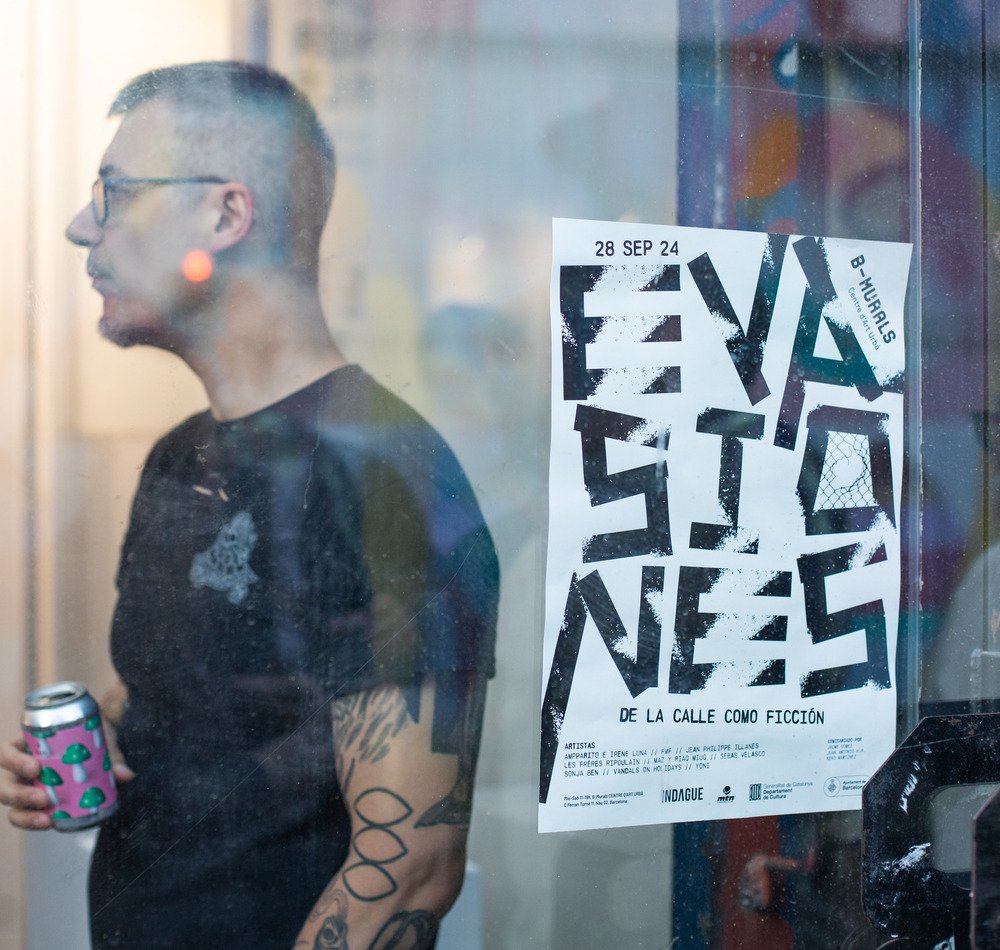
Thanks for your interest in art & creativity on FrikiFish— a one-woman labor of love, providing free content and services to artists, art-lovers and creative projects in-and-around Barcelona. This project runs on caffeine and community love, please consider supporting with a donation or a cup of coffee. Thank you!